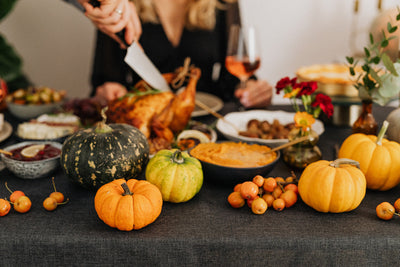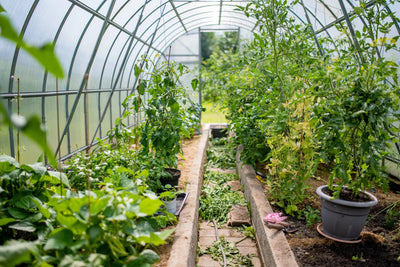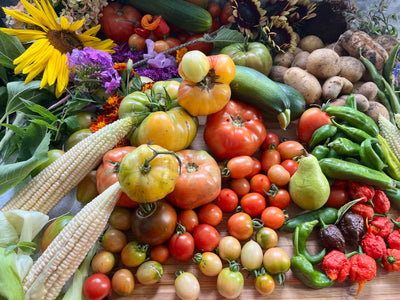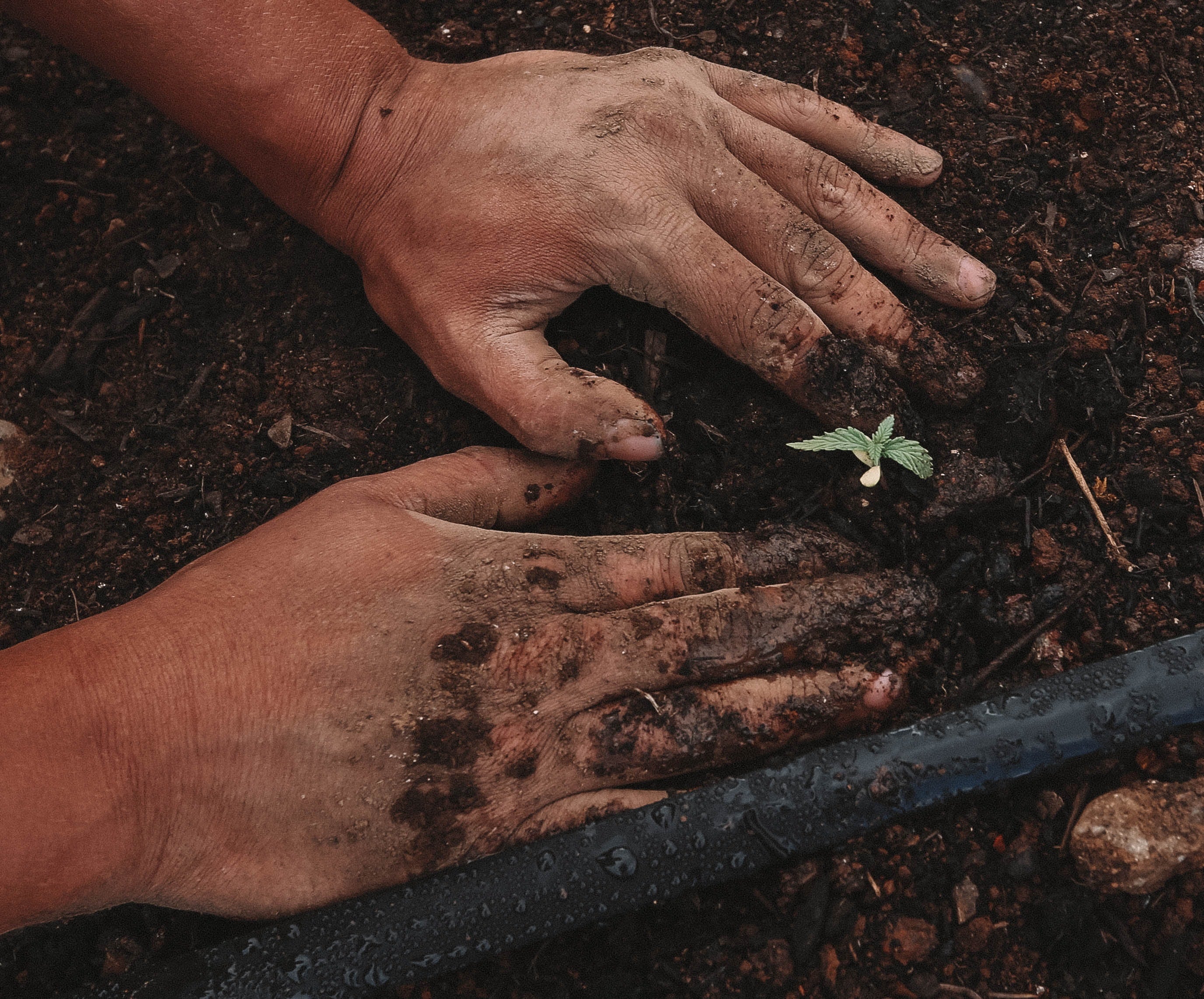Introduction
The rising cost of groceries and global food supply disruptions have many families rethinking their approach to food security. From skyrocketing produce prices to empty store shelves, the reality of food scarcity is becoming hard to ignore. One of the best ways to prepare for these challenges is by building a survival garden using heirloom seeds. Not only do heirloom seeds offer unmatched quality and flavor, but they also empower you to take control of your food storage, build self-reliance, and ensure your family’s food security for years to come.
In this article, we’ll explore why heirloom seeds are a must-have for survival gardening, how they contribute to legacy food storage, and practical tips for starting a survival garden —even if you’re working with small gardening, container gardening, or indoor gardening setups.
💡 Did you know
Most grocery store vegetables come from hybrid seeds, which can’t be saved and replanted. Heirloom seeds, on the other hand, are open-pollinated and can be harvested, saved, and replanted year after year—giving you a renewable food source that can last for generations.
Why Food Security Matters More Than Ever
It’s no secret that inflation has hit food prices hard. A few years ago, you might have been able to grab fresh vegetables for a fraction of today’s cost. Now, everything from lettuce to tomatoes can feel like a luxury item. Beyond cost, global events such as supply chain disruptions, unpredictable weather, and even geopolitical tensions can threaten your access to basic necessities.
Food security isn’t just about having enough food for today—it’s about knowing you have a reliable, sustainable source of nutrition in the future. This is where survival gardening and heirloom seeds shine.
What Makes Heirloom Seeds Essential for Survival Gardening?
Key Benefits of Heirloom Seeds:
Seed Saving for Generations – Once you buy a quality heirloom seed collection, you’ll never need to buy seeds again if you save and store them properly.
Superior Taste and Nutrition – Heirloom varieties are known for their rich flavors and high nutritional content compared to many store-bought vegetables.

Adaptability to Your Region – Over time, heirloom plants adapt to your soil and climate, becoming more resilient each season.
Long-Term Food Security – When paired with techniques like canning and food storage, heirloom seeds can help you stockpile real, homegrown food for years.
If your goal is true self-reliance, heirloom seeds are the foundation for a thriving survival garden.

Heirloom seeds are often referred to as “time-tested” seeds, passed down through generations for their quality and resilience. Unlike hybrid or genetically modified seeds, heirlooms are open-pollinated, meaning you can save and replant them year after year without losing their characteristics.
💡 Did you know
Properly packaged emergency food can last up to 25 years when stored in cool, dry conditions. Pairing long-term food storage with a survival garden ensures a reliable food supply, even during unexpected disruptions.
Starting a Survival Garden: Where to Begin
Starting a survival garden may sound intimidating, but with the right plan and tools, anyone can do it. Whether you have a large backyard or just a balcony, there’s a way to grow food that works for your space and lifestyle.
1. Plan Your Garden Layout
Begin by deciding which gardening method suits your environment. Here are a few options:
Raised Bed Garden – Perfect for backyards, raised beds give you control over soil quality and drainage.
Container Gardening – Ideal for small patios, balconies, or even front porches. Containers allow you to grow herbs, tomatoes, and peppers with minimal space.
Vertical Gardening – A great solution for urban settings. Think hanging baskets, trellises, or wall planters that maximize vertical space.
Indoor Gardening – If you live in an apartment or face harsh winters, grow lights and hydroponic setups can keep you harvesting all year long.
2. Choose Crops That Matter
When planning your survival garden, focus on high-calorie, nutrient-dense crops that will keep your family fed. A few staples include:
Tomatoes (great for sauces and canning )
Potatoes (long-term food storage )
Beans and peas (protein-rich and easy to dry)
Leafy greens like kale and spinach (fast-growing and nutrient-dense)
Carrots and beets (root vegetables with long storage life)
3. Learn Basic Gardening Skills
The good news is you don’t need to be a master gardener to succeed. Focus on simple, high-yield crops first. Learn about composting to enrich your soil and basic pest management techniques. If you’re short on space, small gardening methods like container gardening or vertical gardening can produce surprising amounts of food.

Legacy Food Storage: Preserving Your Harvest
When disaster strikes—whether it’s supply chain collapse, natural catastrophe, or civil unrest—your pantry becomes the first line of defense. Seed Armory’s Legacy Long‑Term Food Storage range delivers peace of mind with high-quality, shelf-stable meals designed for decades, not days.
Built to Last — Legendarily Long Shelf Life
Legacy meals are packaged in heavy-duty Mylar pouches, nitrogen-flushed, and sealed with oxygen absorbers—then packed into stackable food-grade buckets. This robust packaging ensures a shelf life of up to 25 years, allowing you to store with confidence (seedarmory.com).
Nutrient-Rich & Ready to Go
Each bucket contains a well-rounded mix: breakfast, lunch, dinner, fruits, vegetables, and sides like refried beans. These offerings are carefully formulated to be non-GMO, gluten-free, and free from MSG, HFCS, and trans fats, blending nutritional integrity with convenience.
Flexible Portions for Every Scenario
Choose from compact 32-serving kits up to massive 360-serving packages. For example, the Legacy Premium 360‑Serving Package feeds two people three square meals daily for about two months—totaling nearly 144,000 calories in just three buckets. Ideal whether you're prepping for a brief emergency or stocking a year’s worth of sustenance.
Efficiency in Storage & Prep
Buckets are designed to stack and nest neatly—optimized for tight spaces. Prep is as simple as adding hot water. No kitchen necessary—just warm, hearty food when it matters.
Made for Prepper Realities
Time-tested resilience : Heavy packaging guards against pests, moisture, and oxygen.
Morale-friendly bites : Freeze-dried fruits and hearty meals support both physical health and emotional well-being in stressful conditions.
Scalable systems : Whether you're feeding one person for three months or a family for a year, there's a kit that matches your goals.
By combining decades‑long shelf life, nutrient-focused design, and modular scalability, Seed Armory’s Legacy kits aren’t just survival supplies—they’re strategic peace-of-mind tools. Whether used as emergency provisions, camping gear, or part of a true preparedness plan, they're a strong foundation for any resilient household.
Why Canning is Key to Food Security
Canning allows you to store vegetables, soups, and sauces for months or even years without losing flavor or nutrition. Tomatoes, green beans, carrots, and pickles are some of the easiest and most popular options. Pairing heirloom seeds with canning ensures you have a steady supply of homemade, preservative-free meals ready for any emergency.
PROS:
1. Long-Term Food Preservation
Canned foods can last from 1 to 5 years (or longer) when properly sealed, making it ideal for long-term food storage.
Reduces food waste by extending the shelf life of seasonal produce.
2. Cost-Effective
Allows you to preserve homegrown fruits and vegetables, saving money compared to store-bought canned goods.
Buying produce in bulk during peak season and canning it can reduce grocery expenses throughout the year.
3. Control Over Ingredients
You can avoid preservatives, excess salt, and artificial additives commonly found in commercial canned products.
Perfect for creating healthier, customized recipes like low-sugar jams or organic sauces.
4. Self-Reliance & Emergency Preparedness
Canning supports self-sufficiency by ensuring you have a stockpile of food ready for emergencies, power outages, or disasters.
Essential for survival gardens and homesteads.
5. Seasonal & Flavor Variety
Enjoy out-of-season fruits and vegetables all year long.
Homemade canned goods often taste fresher and more flavorful compared to mass-produced versions.
6. Reduces Freezer Dependence
Unlike frozen foods, canned goods don’t rely on electricity to stay preserved.
Great for people with limited freezer space.
7. Eco-Friendly & Sustainable
Reusable jars and lids reduce packaging waste compared to disposable store-bought cans.
Promotes local and homegrown food use.
CONS:
1. Time-Consuming Process
Preparing, sterilizing jars, and processing foods can take several hours per batch.
Requires planning and effort, especially for larger harvests.
2. Initial Equipment Cost
Canning requires jars, lids, a water bath or pressure canner, and other tools, which can be costly upfront.
Replacement lids (single-use) add recurring costs.
3. Risk of Spoilage & Botulism
Improper canning techniques (especially for low-acid foods) can lead to dangerous bacteria like Clostridium botulinum.
Requires strict adherence to tested recipes and safety guidelines.
4. Storage Space Needs
Glass jars are bulky and need cool, dark storage areas.
Not suitable for small kitchens or limited storage.
5. Nutrient Loss
High-heat processing can reduce certain vitamins (like vitamin C and some B vitamins).
While nutrients are still preserved, freezing may retain more nutritional value in some cases.
6. Limited Shelf Stability Once Opened
After opening a jar, the contents must be consumed or refrigerated, just like store-bought canned foods.
Opened jars have a shorter fridge life than fresh produce.
7. Seasonal Limitation
Best for preserving during harvest season, which means you need to dedicate time and effort during peak times.
Out-of-season produce for canning can be expensive.
Small Gardening & Indoor Solutions for Limited Spaces
Don’t have a backyard? No problem. You can still achieve food security by growing indoors or in small spaces.
Container Gardening – Use buckets, planters, or fabric pots to grow everything from cherry tomatoes to strawberries.
Indoor Gardening – A sunny window or grow lights can turn any kitchen or living room into a mini farm.
Vertical Gardening – Install a wall-mounted herb garden, or use stacked planters to maximize production in tight areas.
With a little creativity, even the smallest spaces can contribute to your food storage goals.
Building Self-Reliance Through Survival Gardening
One of the most empowering aspects of a survival garden is the independence it brings. You no longer have to rely entirely on fluctuating grocery store prices or uncertain supply chains. Instead, you’re creating a legacy food storage system that will sustain your family for years.
By saving seeds from your heirloom crops, you can create a closed-loop system where each year’s harvest provides the seeds for the next. Add in preservation techniques like canning and dehydrating, and you’ll build a pantry stocked with healthy, homegrown food.
Tips for a Successful Survival Garden
Start Small, Then Scale – Don’t overwhelm yourself. Start with a few crops and expand as you gain confidence.
Invest in Quality Heirloom Seeds – The better the seed, the better the harvest. Seed Armory offers carefully curated heirloom collections ideal for beginners and experts alike.
Practice Crop Rotation – Rotate crops each year to maintain soil health and reduce pests.
Water Wisely – Use drip irrigation or rainwater harvesting to conserve water, especially in dry climates.
Take Notes – Keep a gardening journal to track what works and what doesn’t.
Final Thoughts: Preparing for Tomorrow with Heirloom Seeds
The world is changing, and the stability of our food systems is not guaranteed. Rising prices and food shortages are no longer “what if” scenarios—they’re happening now. But with a little planning, you can ensure your family’s food security and self-reliance through survival gardening.
By investing in heirloom seeds, you’re not just planting vegetables—you’re planting independence, resilience, and peace of mind. Whether you’re using raised bed gardens, container gardening, or even indoor gardening, your survival garden can become a source of both food and confidence in uncertain times.
Ready to Start Your Survival Garden?
Seed Armory offers premium heirloom seed collections designed to help families like yours build legacy food storage and thrive during challenging times. Stock up today and take the first step toward food security and true self-reliance.











